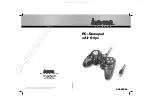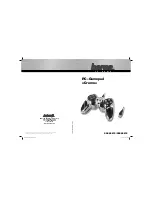
RTxxx LED lighting controllers - User Manual
The Power Supply Unit (PSU) used to energise the RTxxx must provide
double insulation/reinforced isolation from mains electricity and pro-
tected against short circuits and overloads. We recommend using a
PSU that limits its output current to the appropriate rating of the con-
troller by design, by setting the current limit on the supply (if pos-
sible), or through over current protection. The PSU should be
approved to either IEC 60950-1, IEC 60335-1, IEC 61010-1, IEC61558-1,-
2,-16. The PSU may also be approved to equivalent or superior safety
standards.
Any energised conductors derived from mains electricity must also
have Safety Extra Low Voltage (SELV) output. Refer to
for allowable voltage limits.
At maximum ratings the temperature of the enclosure can exceed
65°C. Therefore, either all cabling must be rated to at least 100°C, or
all cabling must be additionally insulated by an appropriately rated
heat resistant sleeve or prevented from touching the metal enclosure
of the controller, or its heatsink where fitted.
Power supply cabling to the controller must be rated to at least 5A or
10A (RT8xxF).
The cabling from the channel output to the load must be rated higher
than the maximum channel output current.
If the controller is set up incorrectly, or in the event of failure, the
energy provided by the power supply to the controller may become
directly connected to any or all output channels. You must consider
this during installation, and if necessary, provide adequate protection.
The DC power supply to controller must be externally fused to 5A
or10A (RT8xxF) using a slow blow fuse (T5AH, 50V or T10A, 50V).
The installer must provide a clearly marked, nearby and easily access-
ible switch as part of the installation to allow the controller to be dis-
connected from its energy source on both power conductors.
Transients caused by inductive loads must be suppressed externally
to the RTxxx.
Warning:
This is a Class A product. Its use in residential areas may
cause radio interference, and such use should be avoided unless
special measures are taken by the user to restrict emissions to a level
that allows the reception of broadcast transmissions.
—
8
—









































